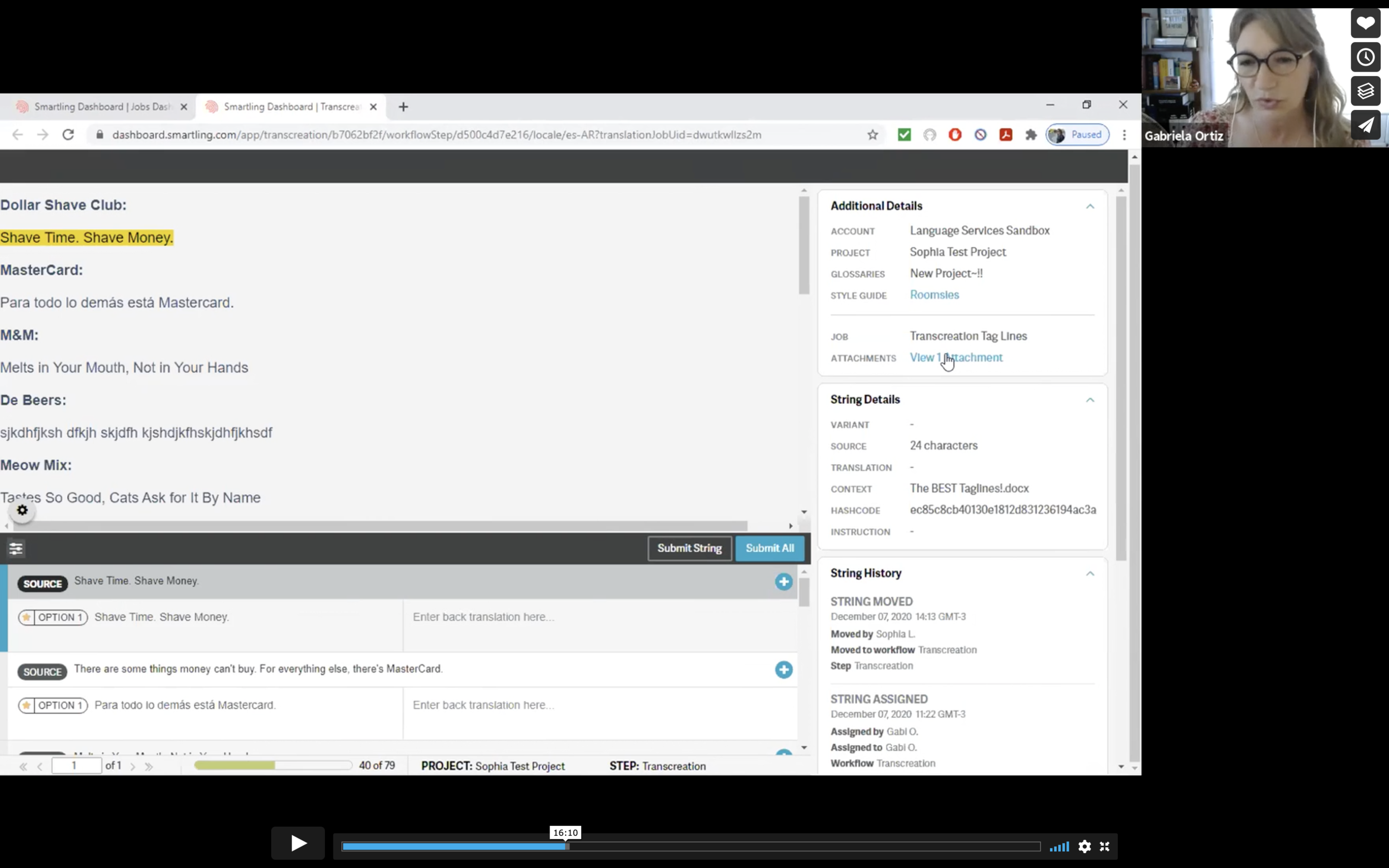Project: Transcreation Tool
Product Designer @ Smartling, 2017-21
CREATING TRANSCREATION
Building an innovative Transcreation tool from scratch
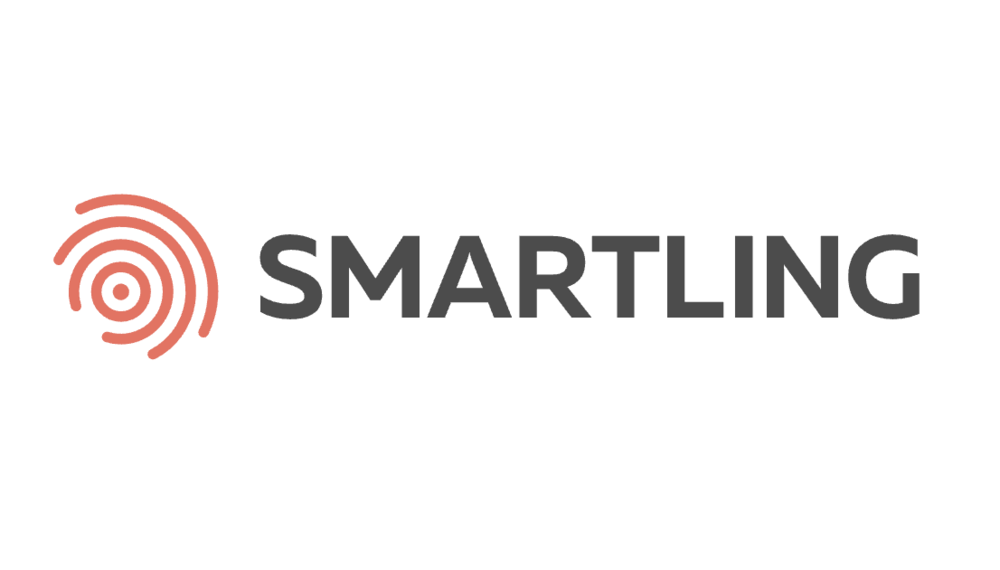
Over the course of 2019, the word “Transcreation” was being used more and more around the office. At the end of the year, it was finally pushed into high gear so we could begin to chip away at what we could offer our customers to give them access to a more creative form of translation inside of our platform.
Discovering Processes
Over recent years, the advancements of Machine Translation have given the localization industry more incentive and excitement over the ability to focus on high touch, creative projects very similar to many other fields that have been offloading mindless, repetitive work via automation and componentization.
While translation generally tends to be a more straight forward process of source text being converted to another language with as similar wording and meaning as possible, there is a form of translation that is intended to give a linguist more freedom to re-interpret the intention of a tagline or creative statement and to transcreate it to fit a culture’s traditions, customs, and colloquialisms.
I spent many hours in interviews alongside the PMs of the Project, Tobias Kahn and later on Sophia Lazare. We talked to customers in a variety of roles, from localization managers to marketing leads since their interest in this tool was almost greater than common translation since they could really push for a higher impact on each market region.
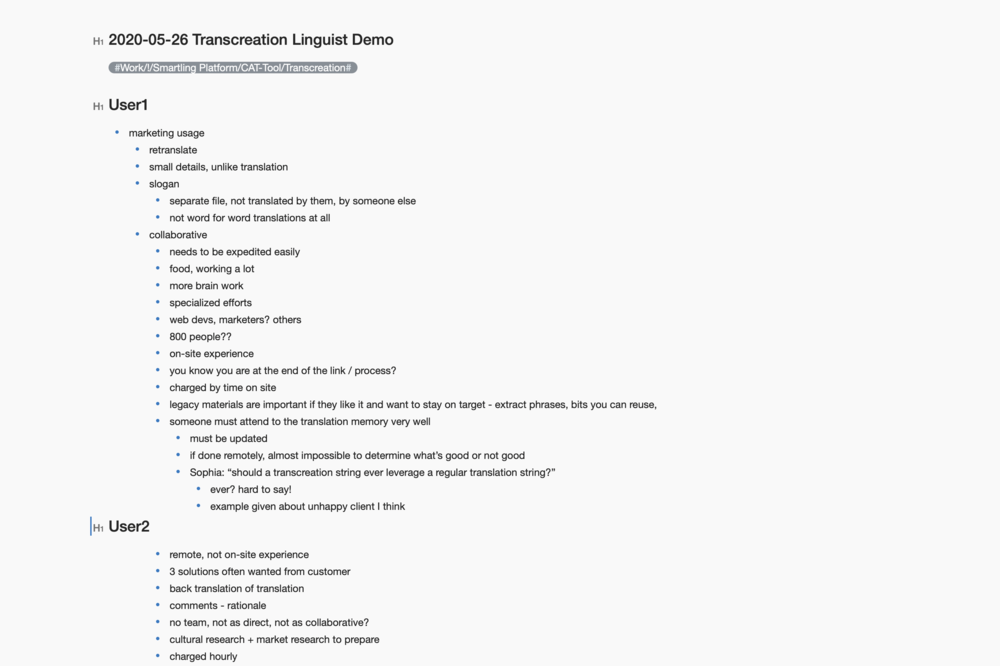
Collaboration is key
From our discussions, we found that the linguists brought on for Transcreation were incredibly trusted members in the process, seen more like a copywriter on the team whose expertise was just as important as the client. The way they described their interactions and communication styles drove us to consider how to craft the tool to fit this environment as not to remove such a valuable working experience for each party.
While the MVP could not include all of the features we were inspired to consider through our research, we made a lot of notes for future iterations to allow for more collaboration and flexibility in the tool
Beyond Spreadsheets
Translation industry is very familiar with spreadsheets. Comparing translations, tracking changes, and handling lots of importing and exporting of data, linguistic agents tend to live in the world of excel. In Smartling, the platform was built to give them some of that structure, with a connection to the contexts of visual implementations and other references beyond the text itself.
However, with Transcreation, we needed to advance the structure of the editor because of additional layering that was necessary while staying true to the familiar elements of the primary tools. For MVP, we would reduce the scope of the main translation tool and build back in after getting to test out the real world usage.
The CAT Tool

As with a lot of our work, we often run into some technical challenges. Being able to create an MVP on top of an complex tool such as our translation editing tool, we had to build on a smaller scale from scratch. Eventually we would want to build in many of these features, but for the initial launch we would not have time to refactor so many of its non-modular pieces. We would use it as a framework still as the eventual merging with modularized containers was the goal and we would want the UX to be aligned and ready to handle it.
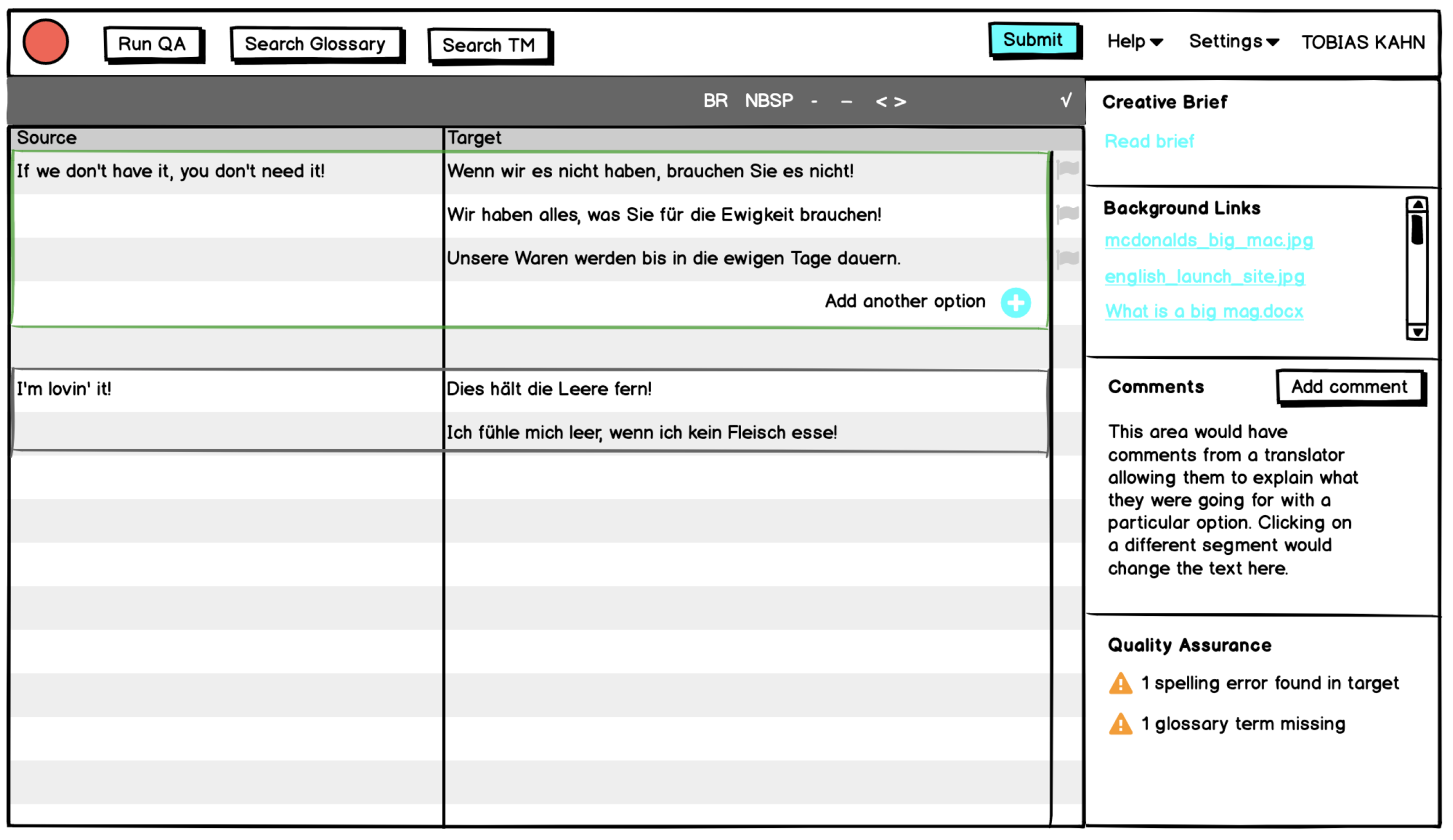 Early Wires from Product Manager
Early Wires from Product Manager
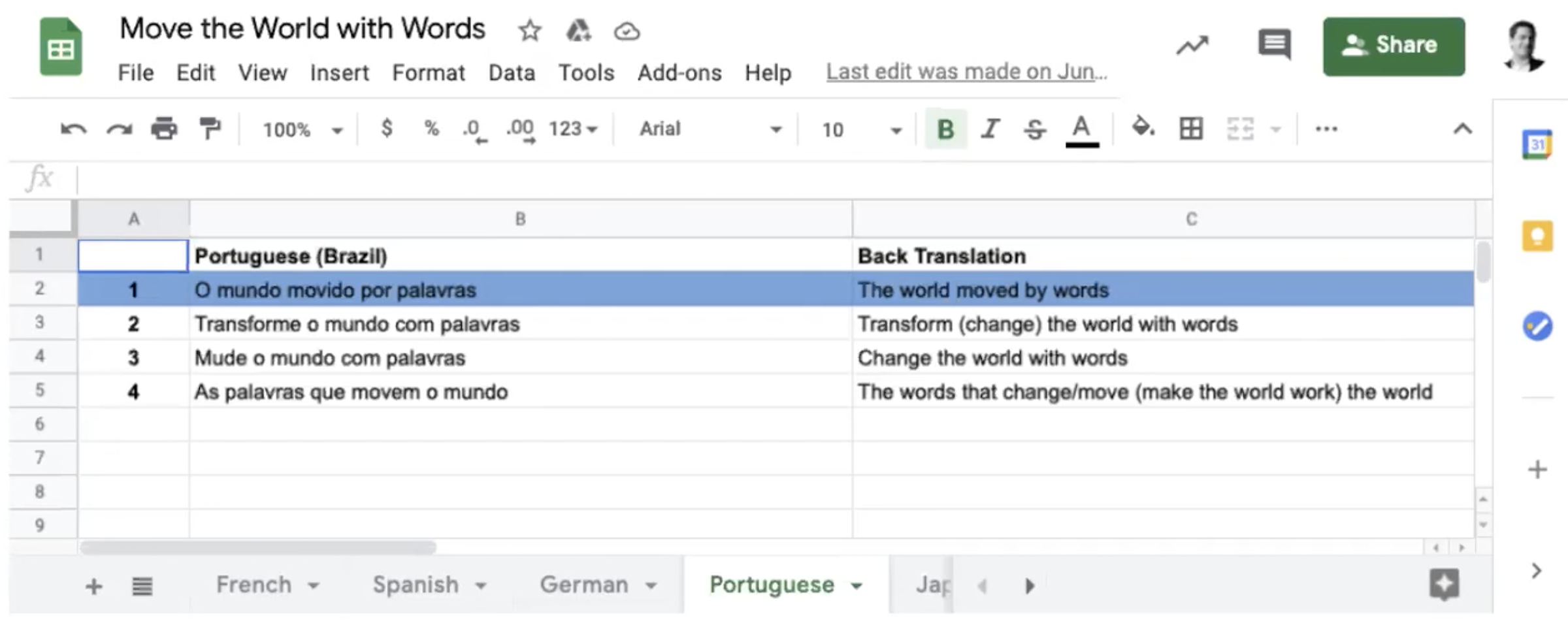

During early investigation of other Transcreation tools and spreadsheet usage, we considered some of the oddities like repeating content unnecessarily and reducing the focus space of the transcreation and descriptive explanation themselves. Getting into the flow of writing and letting the linguist move quickly through brainstorming processes was not something they would want blocked, nor would they want to work without the clarity of visual context.
Design Iterations & Prototype
After nailing down the primary elements and a structure that would allow for giving the most space to the most valuable elements, we know we needed to focus on the interaction flow. We ran general test with a small group of linguists, having them walk us through what they expected might happen and identifying any language, iconography, or flows which were confusing or less discoverable.
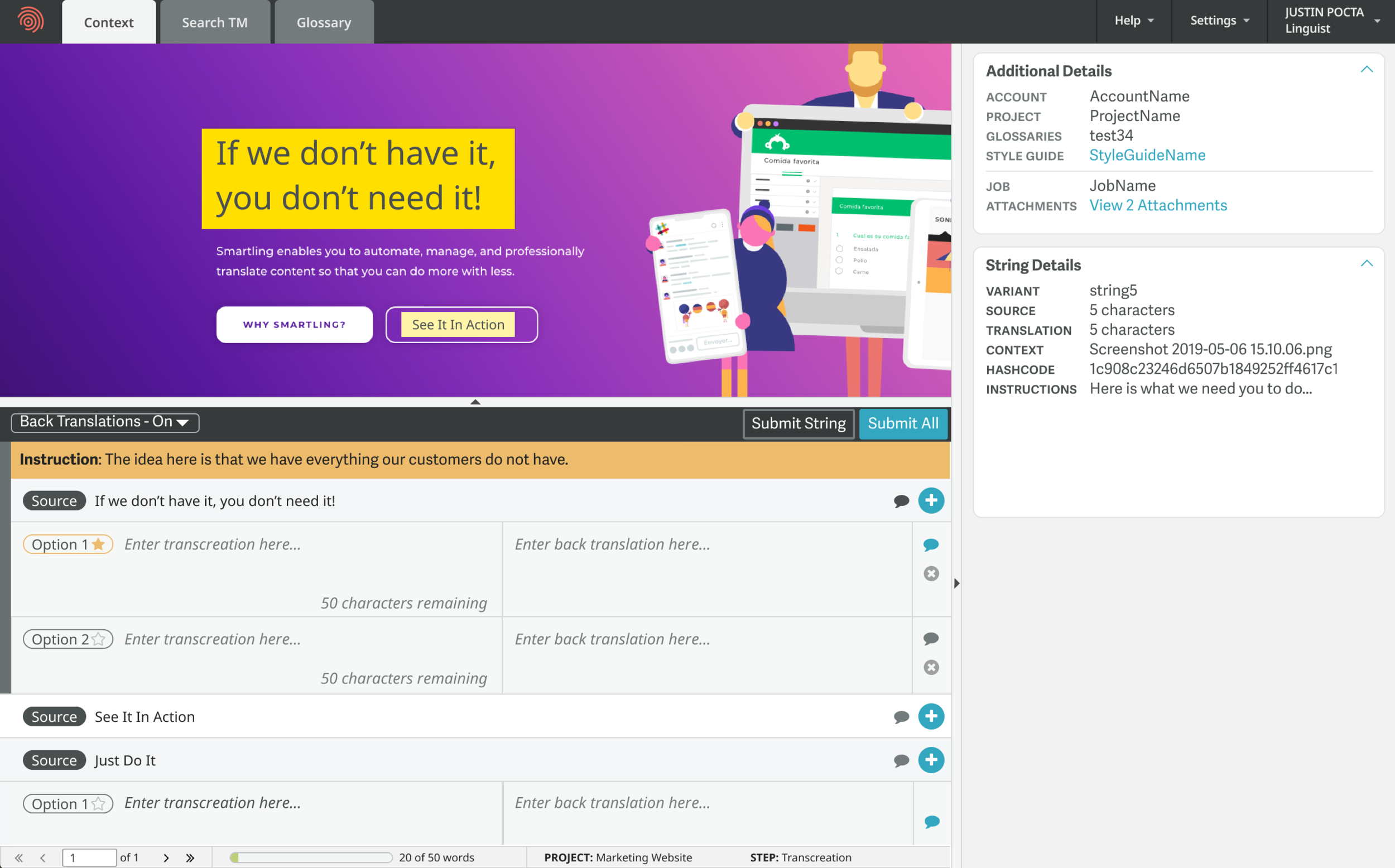


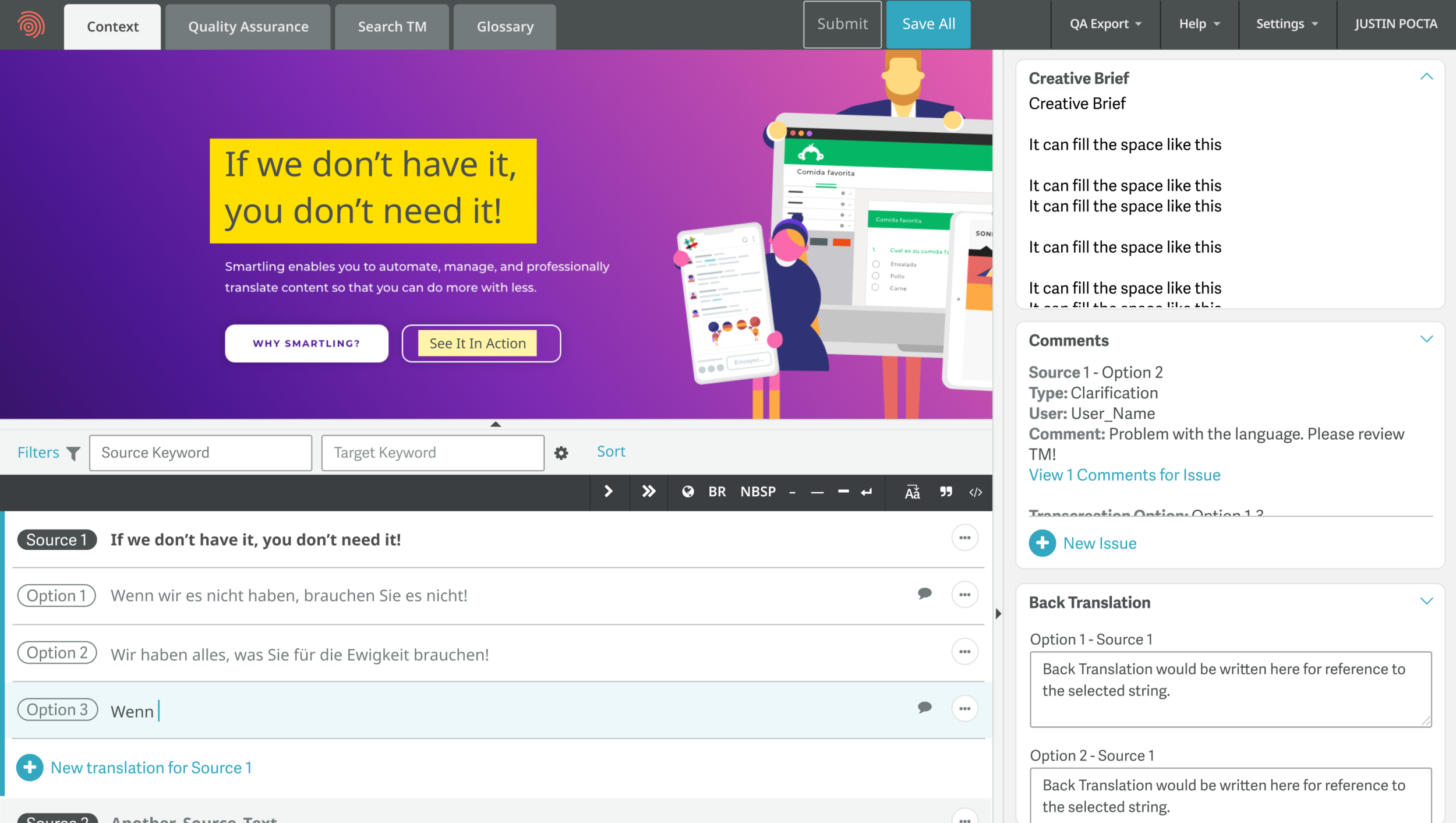

UX Handoff
In March of 2020, I got the pleasure of hiring on the second designer to our product team. Frannie Laks jumped in and quickly onboarded during the beginning of the pandemic. Within a short time, I was able to handoff the foundations I had laid for Transcreation and met with her and the PM regularly to help identify existing UX patterns, potentially new component needs, to recognize places where we were overbuilding beyond the MVP scope, and any prior interview data that could help us in closing off the project to get it out the door. I also set up several one-on-one sessions to work through specific aspects about Figma and its prototyping capabilities as well as the component structure since the rush to market was intense and I knew moving from Sketch to Figma takes a fair amount of adjustment.
“I absolutely love working on creative projects with our customers, and Smartling’s new Transcreation Tool makes it substantially more efficient to produce quality results,” said Gabriela Ortiz, a professional Smartling translator in Argentina. “I no longer have to stare into the cells of a spreadsheet and circulate transcreations by email. Instead, I log into Smartling, write three options with back translations, and then communicate directly with the customer through the platform to ensure the work meets their expectations.”
Transcreation Demo to present the new tool to our customers as well as those interested in localization
ADDITIONAL RESOURCES
- Smartling Introduces Transcreation Tool for Creative Translations
- Six Ways Transcreation Differs from Translation
- Article: Automating Transcreation
Project Notes
Details
Website
Timeline
- DISCOVERY TO DEV HANDOFF
- Jan 2020—July 2020
The Team
Product/Design
- Sophia Lazare (PM), Tobias Kahn (PM)
- Justin Pocta (UX/UI), Frannie Laks (UX/UI)
Development
- Anton Shanyuk (FE Engineer)
- Keith Legin (Engineer Lead)
